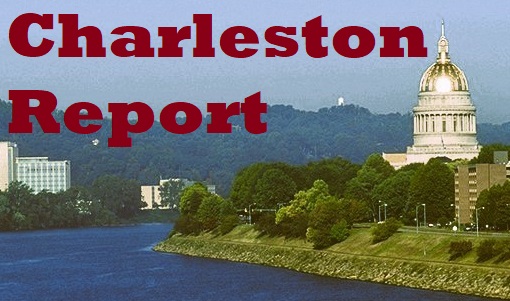April 7th, 2023 by WCBC Radio
|
Maryland residents and visitors are invited to practice what to do in the event of a tornado as part of Maryland Severe Storms Awareness Week, April 10-16, 2023. The Maryland Department of Emergency Management (MDEM) and the National Weather Service (NWS) are urging residents to be aware of the most common spring weather hazards and how to prepare for and protect against them. “Marylanders should be aware of spring weather hazards, most notably tornadoes, damaging (straight line) winds, flooding, and lightning,” said Russ Strickland, Secretary of MDEM. “Although we can’t predict when these hazards will materialize, we know that severe thunderstorms can and do pose a serious threat to life and property. We urge all Marylanders to know about these threats and to be proactive in having several different ways to receive the latest alerts.” Marylanders also are encouraged to download the MdReady WebApp, which gives instant access to a wide array of emergency notifications and preparedness information to residents and visitors alike. To install the new WebApp, users can visit MdReady.maryland.gov and follow the prompt to easily add the MdReady shortcut to a mobile device home screen or to sign up for text alerts in English or Spanish. During Severe Storms Awareness Week, MDEM will devote special days to cover information about flooding, damaging winds, tornadoes, hail, and lightning. The theme on Monday, April 10, is flooding, generally the most common weather hazard in Maryland. Most flood fatalities in Maryland have happened when people try to drive, walk, or swim across flood waters. If you see standing water on a roadway or bridge, it is often not possible to tell how deep the water is or how quickly it is flowing. Turn Around, Don’t Drown. On Tuesday, April 11, the focus is damaging winds. While many people focus on swirling tornadic winds, straight line winds and downbursts can also cause serious damages. Much of the damage from the derecho storm in the summer of 2012 was caused by straight line winds. On Wednesday, April 12, Marylanders are invited by MDEM and the NWS to practice what to do in the event of an actual Tornado Warning during the Great Maryland Twister Test tornado drill. At 10 a.m., the NWS will issue a statement over National Oceanic and Atmospheric Administration (NOAA) Weather Radios about the tornado drill. Be aware, while an EAS test code will precede this message, that Required Monthly Test (RMT) code may not trigger some weather radios. This test code will also not trigger Wireless Emergency Alerts over cell phones. The NWS Baltimore/Washington Weather Forecast Office, which covers most Maryland jurisdictions, is coordinating this statement and drill in conjunction with their colleagues at NWS Mount Holly (PA), which covers Caroline, Kent, Queen Anne’s and Talbot county, and NWS Wakefield (VA) which handles Dorchester, Somerset, Wicomico and Worcester counties. While Maryland schools, businesses, and organizations can drill at 10 a.m., they are encouraged to practice their tornado drill any time that day. Dangers from hail will be the focus on Thursday, April 13. Hail is a ball of ice formed in the extreme turbulence of strong thunderstorms as rain freezes and re-freezes, sometimes allowing the ice to grow as large as the size of softballs. Hail is only formed in strong, dangerous storms and the larger the hail, the more dangerous the storm. If you witness hail, get indoors as soon as possible. On Friday, April 14, the theme is lightning safety. More than 98 percent of lightning casualties are suffered by people outdoors. The most frequent fatalities come outside of the rain area. Lightning can strike more than 10 miles away from where rain is falling. If you can hear thunder, you are close enough to be struck by lightning. When Thunder Roars, Head Indoors. “The majority of Maryland's weather-related damage comes from thunderstorms and tornadoes,” said James E. Lee, Meteorologist in Charge of the NWS Baltimore/Washington Weather Forecast Office (WFO). “The NWS Baltimore/Washington WFO typically identifies hazardous weather threats minutes in advance, then immediately issues severe weather warnings. It is vital that Marylanders receive our warnings and rapidly respond to get out of harm's way. Maryland Severe Storms Awareness Week reminds people to develop a response plan, then practice the plan during the tornado drill.” Visit our Severe Storms Awareness Week page for more information: https://mdem.maryland.gov/Pages/severe-storms-week.aspx. To find more preparedness information for severe storms and other hazards, please visit the following websites: mdem.maryland.gov/Pages/types-of-emergencies.aspx, weather.gov/safety, or ready.gov. |

















